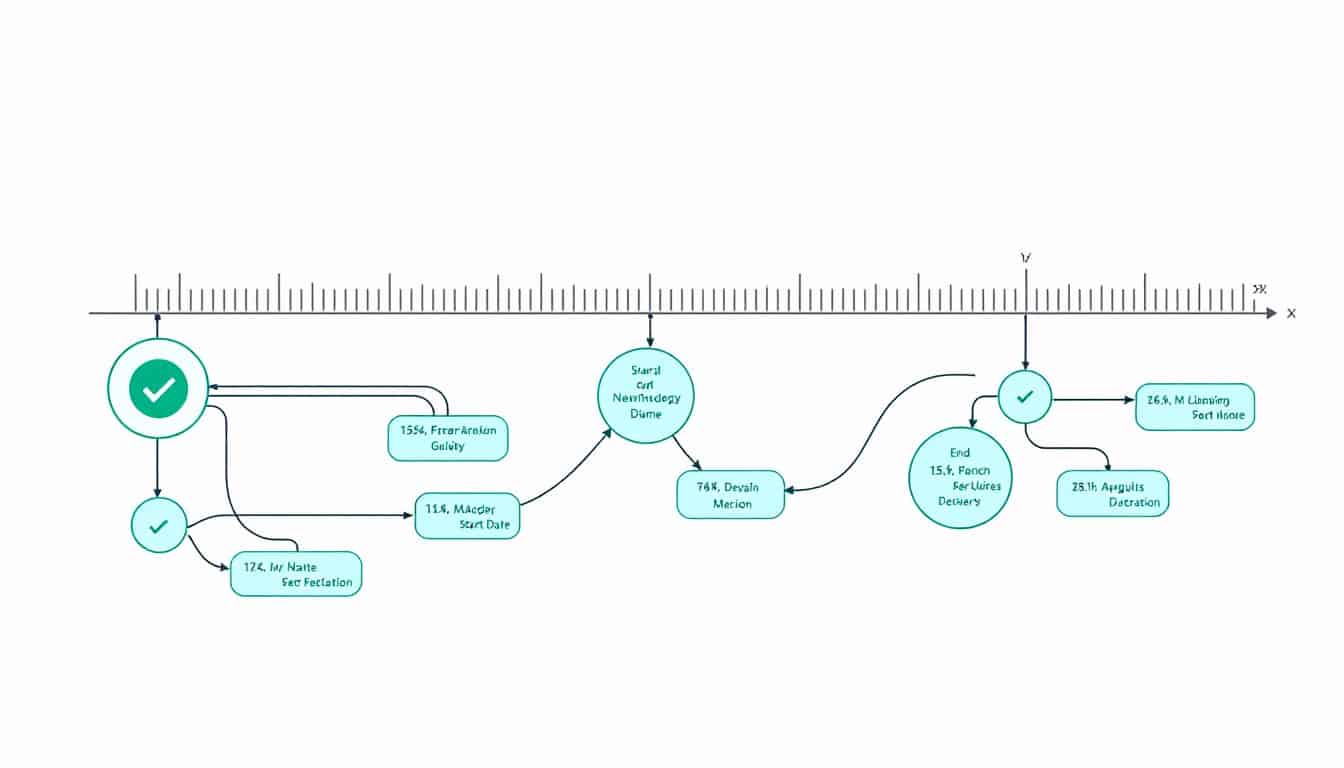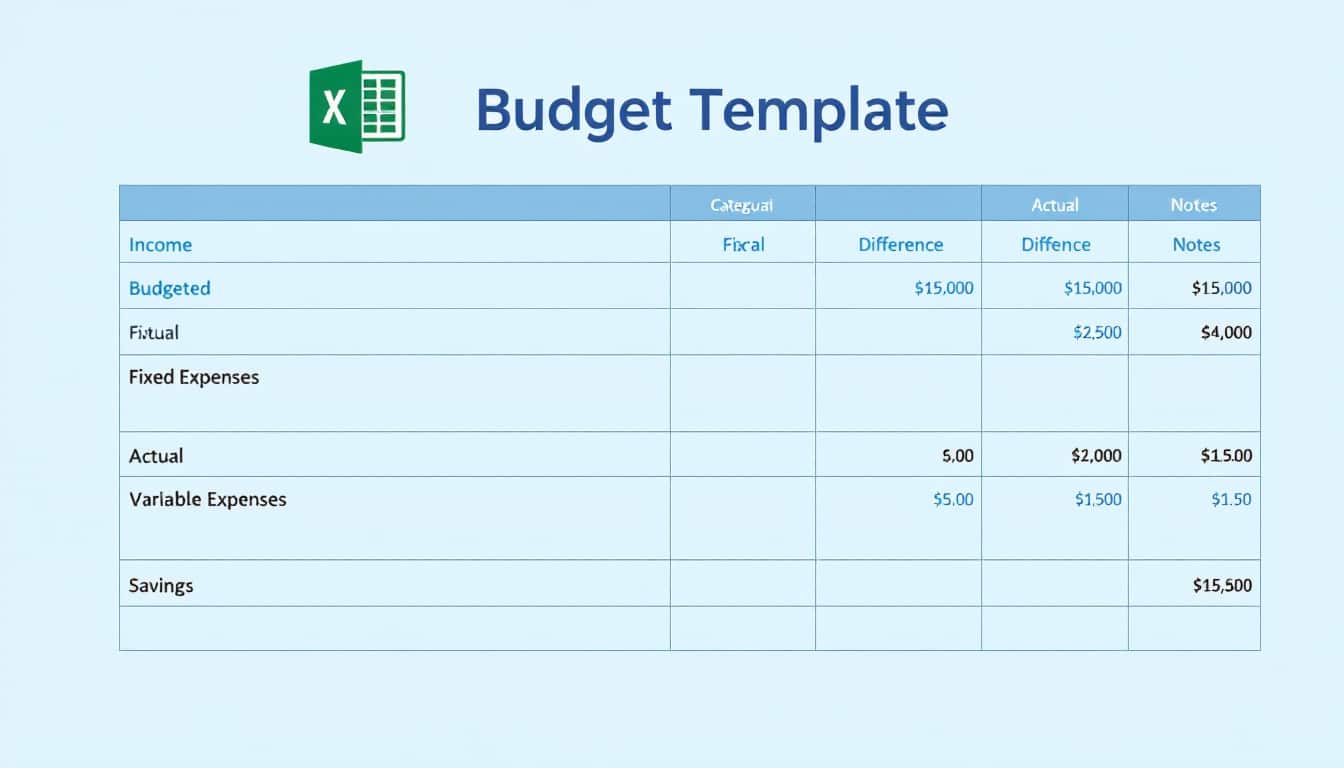Each project is unique, but not all are suitable for a given organization. Selecting the right project is essential to ensure optimal return on investment. Project evaluation helps you navigate this complex process.
Understanding when and how to conduct a project evaluation can transform your approach to managing initiatives. Whether it’s to analyze risks or maximize benefits, this strategic tool is indispensable. Discover the different methods and techniques to refine your decisions and lead your projects to success.
🔥 Nous recommandons Ideamap
Ideamap est l’outil idéal pour un brainstorming ou un projet collaboratif. Grâce son interface facile et à ses fonctions IA, Ideamap booste votre créativité tout en favorisant une meilleure organisation de vos idées pour atteindre vos objectifs.

What is a project evaluation?
A project evaluation is a systematic analysis aimed at determining the feasibility, benefits, and risks associated with an initiative before, during, and after its implementation. It serves to ensure that selected projects align with the organization’s strategic objectives and will provide significant added value. Project evaluation includes defining objectives, analyzing necessary resources, planning key steps, and estimating costs and potential benefits.
Creating a well-structured project plan is essential for effective evaluation. To learn more about creating a project plan, you can refer to this detailed example. Furthermore, the importance of idea management in this context cannot be underestimated. Discover the issues of idea management to maximize the potential of each project.
Why is it important to measure the value of initiatives?
Measuring the value of initiatives ensures that the resources allocated to a project are used optimally and that the set objectives are achieved. An effective project evaluation helps identify the most profitable projects and those that provide the best return on investment. It also allows for the prioritization of projects based on their potential impact on the organization.
By properly assessing the value of initiatives, organizations can avoid wasting resources on unpromising projects. Additionally, it facilitates decision-making by providing concrete data on which to base strategic choices. A good evaluation also helps build stakeholder confidence by demonstrating that each project is rigorously analyzed before being approved.
When should a project evaluation be conducted?
A project evaluation should be conducted at several key stages of a project’s lifecycle. Before launch, an initial evaluation determines the feasibility and relevance of the initiative. This stage is crucial to avoid investing in projects that are not aligned with strategic objectives or that present high risks.
Another important evaluation occurs during the planning phase. At this stage, it is essential to ensure that the detailed project plan is realistic in terms of deadlines, budget, and resources. Adjustments may be necessary to ensure that the project stays on track.
Finally, regular evaluations during execution allow for tracking progress and quickly identifying potential issues. After the project closure, a final evaluation measures the results obtained against the initial objectives and identifies lessons learned for future projects. To manage unforeseen events, discover how to get projects back on track.
What are the types of project evaluation?
There are several types of project evaluations, each focusing on specific aspects to provide a comprehensive view of a project’s feasibility and potential for success. The main types include:
- Financial evaluation: Analyzes the project’s profitability by comparing projected costs with expected benefits.
- Economic evaluation: Assesses the project’s impact on local or global economy, including job creation and economic development.
- Strategic evaluation: Checks the alignment of the project with the organization’s long-term objectives.
- Technical evaluation: Analyzes the technical feasibility of the project in terms of required resources, technologies, and skills.
- Operational evaluation: Ensures that the project can be effectively integrated into the organization’s daily operations.
- Social evaluation: Examines the social impacts of the project, such as improving quality of life or promoting equality.
- Legal and regulatory evaluation: Checks the project’s compliance with applicable laws and regulations.
Each of these types of evaluations provides valuable insights, enabling decision-makers to make informed decisions and minimize risks associated with projects.
What methods and techniques to use for an effective project evaluation?
To conduct an effective project evaluation, several methods and techniques can be employed. Among the most common are:
Cost-benefit analysis
The cost-benefit analysis compares the total costs of a project with the benefits it generates. This method helps determine if the benefits outweigh the incurred costs, making the project financially viable. Tools such as Net Present Value (NPV) and Internal Rate of Return (IRR) are often used to refine this analysis.
Feasibility study
The feasibility study assesses whether a project is technically, economically, and operationally feasible. It examines available resources, constraints, and potential risks, providing an overview of the project’s chance of success.
SWOT and PESTLE
The SWOT (strengths, weaknesses, opportunities, threats) is a strategic tool that helps analyze internal and external factors influencing a project. Meanwhile, the PESTLE analysis (political, economic, social, technological, legal, environmental) examines macro-environments that may affect the project.
Monte Carlo simulation
The Monte Carlo simulation is a statistical technique that evaluates the risks and uncertainties related to a project by simulating different variables and scenarios. This helps anticipate potential challenges and plan appropriate responses.
To delve deeper into human resource management in project evaluation, discover the key elements and benefits of human resource management.
How do project management tools facilitate evaluation?
Project management tools play a crucial role in facilitating project evaluation. They offer robust features for planning, tracking, and analyzing different phases of a project, ensuring accurate and real-time evaluation. Software like ProjectManager enables the creation of interactive Gantt charts, generating customized reports, and visualizing project progress through dynamic dashboards.
By integrating project management tools, teams can better coordinate their efforts, quickly identify deviations from the initial plan, and adjust strategies accordingly. Moreover, these tools facilitate communication among team members and stakeholders, ensuring complete transparency throughout the project lifecycle.
To learn how to create an effective project plan with a concrete example, visit this detailed guide.
What project management models can help in evaluation?
Several project management models can be used to enhance project evaluation. Among the most popular are:
- The Waterfall model: A sequential approach where each phase of the project must be completed before moving on to the next. This model is suited for well-defined projects with stable requirements.
- The Agile model: An iterative and flexible approach that allows for continuous adjustments based on feedback and project developments. Ideal for projects requiring rapid adaptation.
- The hybrid model: Combines elements of both the Waterfall and Agile models, thus offering greater flexibility while maintaining a rigorous structure.
Each model presents specific advantages depending on the nature and requirements of the project. Choosing the right model is essential for a successful project evaluation and to ensure that the project remains aligned with the organization’s strategic objectives.
To better understand the issues of idea management in this context, consult this in-depth article.
How to optimize resource management for better evaluation?
Effective resource management is crucial to ensure the success of a project evaluation. This involves carefully planning the allocation of human, financial, and material resources throughout the project. Poor resource management can lead to delays, cost overruns, and even project failure.
Modern project management tools offer advanced features to track resource usage in real-time. For example, they allow visualizing team workloads, optimizing task assignments, and forecasting future resource needs. By balancing workloads effectively, project managers can avoid team burnout and ensure optimal use of available resources.
To explore the key elements and benefits of human resource management, visit this article.
What are the key performance indicators (KPI) for measuring the value of projects?
Key performance indicators (KPI) are essential for measuring the success of a project evaluation. They provide quantitative and qualitative metrics that allow for tracking project progress and assessing its impact. Among the most commonly used KPIs are:
- On-time delivery: Measures the project’s ability to proceed according to the planned schedule.
- Budget compliance: Assesses whether expenditures align with budget forecasts.
- Quality of deliverables: Analyzes the compliance of expected results with established quality standards.
- Stakeholder satisfaction: Measures the degree of satisfaction among clients, end users, and other involved stakeholders.
- Return on investment (ROI): Evaluates the project’s profitability by comparing realized benefits with incurred costs.
By tracking these KPIs, managers can gain an overview of project performance and quickly identify areas requiring adjustments. This ensures that the project remains aligned with the organization’s strategic objectives and delivers tangible value.
To learn how to effectively manage unforeseen events and get projects back on track, consult this article.
How to integrate feedback into project evaluation?
Integrating feedback is a crucial step in project evaluation. It allows for learning from past successes and failures to improve future processes. After each project, it is important to conduct a post-mortem analysis to identify what worked well and what can be improved.
The lessons learned from this feedback can be documented and shared within the organization to promote a culture of continuous improvement. Moreover, they allow for adjusting methodologies, tools, and project management strategies based on the insights gained. This contributes not only to increasing the success rates of future projects but also to enhancing the organization’s resilience and adaptability in the face of challenges.
To delve deeper into the role of mind mapping in personal and professional development, explore this article.
What complementary tools can support project evaluation?
In addition to the methods and techniques mentioned, several complementary tools can greatly support project evaluation. Specialized software, customized reporting templates, and collaboration platforms are valuable resources that can enhance the precision and efficiency of evaluations.
Mind mapping platforms, for example, allow for visualizing the different dimensions of a project and facilitate decision-making. Tools for managing unforeseen events help anticipate and tackle risks, ensuring that the project stays on track despite encountered obstacles.
Moreover, human resource management software can optimize the use of talent and skills within the project team, ensuring a balanced and effective distribution of tasks. To learn more about managing unforeseen events, consult this article.
How to ensure continuous post-evaluation follow-up?
Ensuring continuous follow-up is essential to guarantee that the lessons learned from project evaluation are effectively integrated into future initiatives. This involves implementing regular review processes, updating knowledge databases, and providing ongoing training for teams.
A rigorous follow-up helps maintain project quality and adopt a proactive approach to emerging challenges. Furthermore, it fosters a culture of continuous improvement where each project contributes to the overall development of the organization.
To discover how to effectively manage unforeseen events and get projects back on track, visit this article.
By following these strategies and using the right tools, you can significantly enhance project evaluation and maximize the value of your initiatives. A rigorous evaluation not only allows for selecting the most promising projects but also ensures their success throughout their lifecycle.














